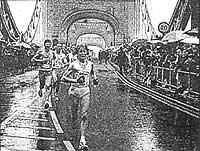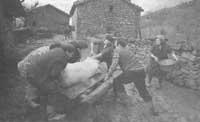The maratorium modifies the muscle structure
1988/02/01 Elhuyar Zientzia Iturria: Elhuyar aldizkaria
Four years ago an athlete put a very nice brand: travel 3500 km in seven weeks. During this time a group of researchers analyzed the body functions of the corridor. This study allowed to collect a lot of data on muscle changes that cause prolonged physical efforts.
The athlete was 46 years old and from his youth runs 30 km a day. The surgeons extracted muscle samples from their thigh after starting and finishing the test. The researchers analyzed the samples using an electronic and optical microscope: number of cells, size, appearance, chemical activity and blood supply.

After the race there were indications of excess muscle damage, due to repeated failures in the local circulation. Muscle tissue died and was replaced by connective tissue. But the new muscle tissue was regenerated as part of the restoration process.
The most surprising thing was that, at the end of the entire race, the muscle structure was remarkably modified. The fibers were smaller and many of them were type 1. This type of fibers use less energy and contract more slowly. In addition, many of the type 2 fibers (which need more oxygen and energy) became type 1 or died.
This phenomenon has only been observed in animals subjected to laboratory conditions. Type 2 fibers accumulate lactic acid that produces pain in the muscles, so its elimination involves the deactivation of the body alarm.

Gai honi buruzko eduki gehiago
Elhuyarrek garatutako teknologia




